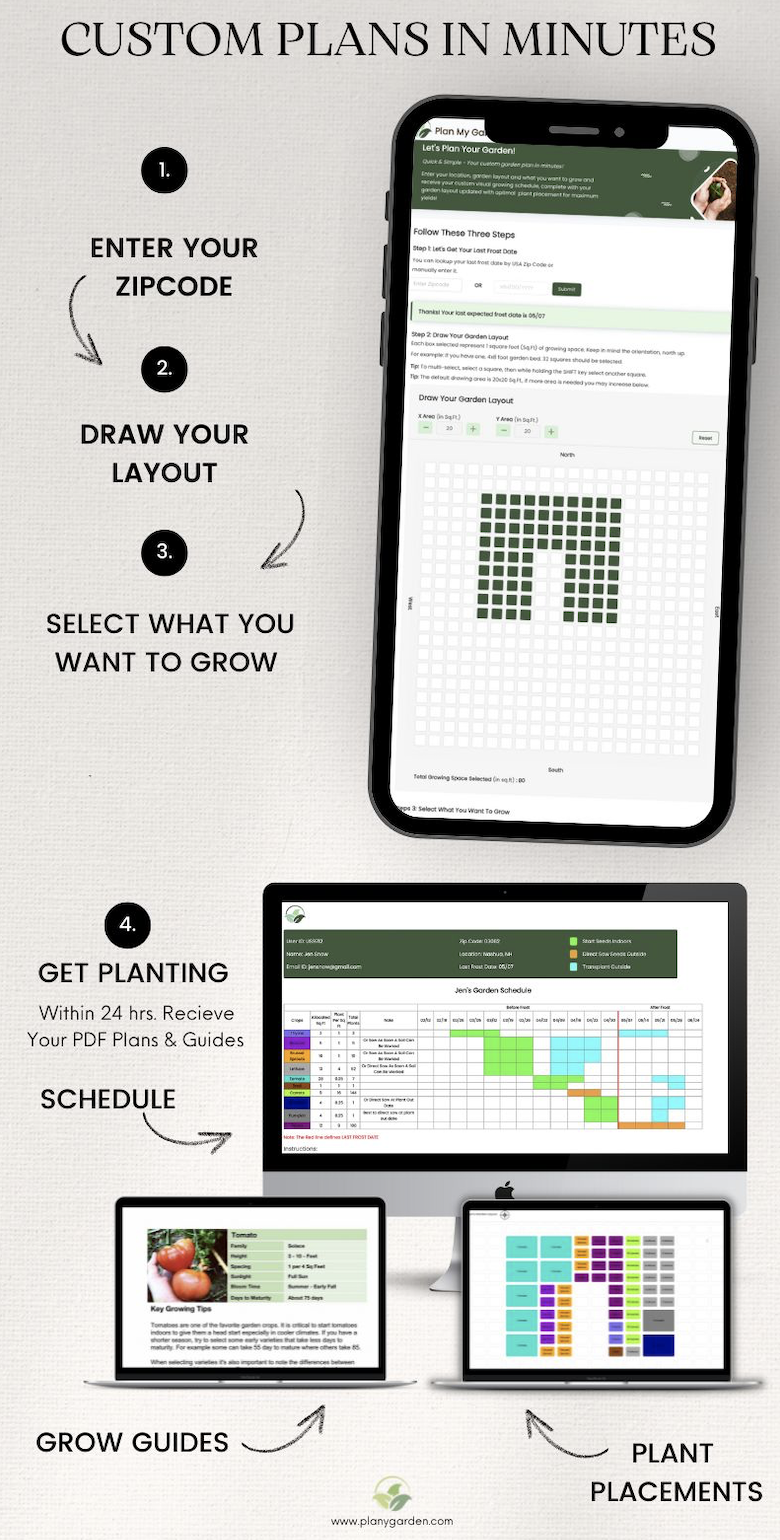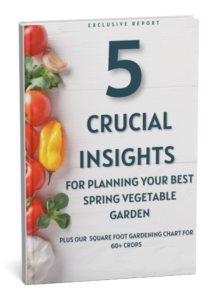Last Updated on August 25, 2023
How to Plant Fruit Trees Easy and Mistakes to Avoid
In this quick post we are going to go though all the key steps to transplant fruit trees and some common mistakes to avoid.
Using the Right Tools
Once you’ve selected a nice sunny location you want to use the right tool to dig the hole.
Use a square garden spade instead of a shovel.
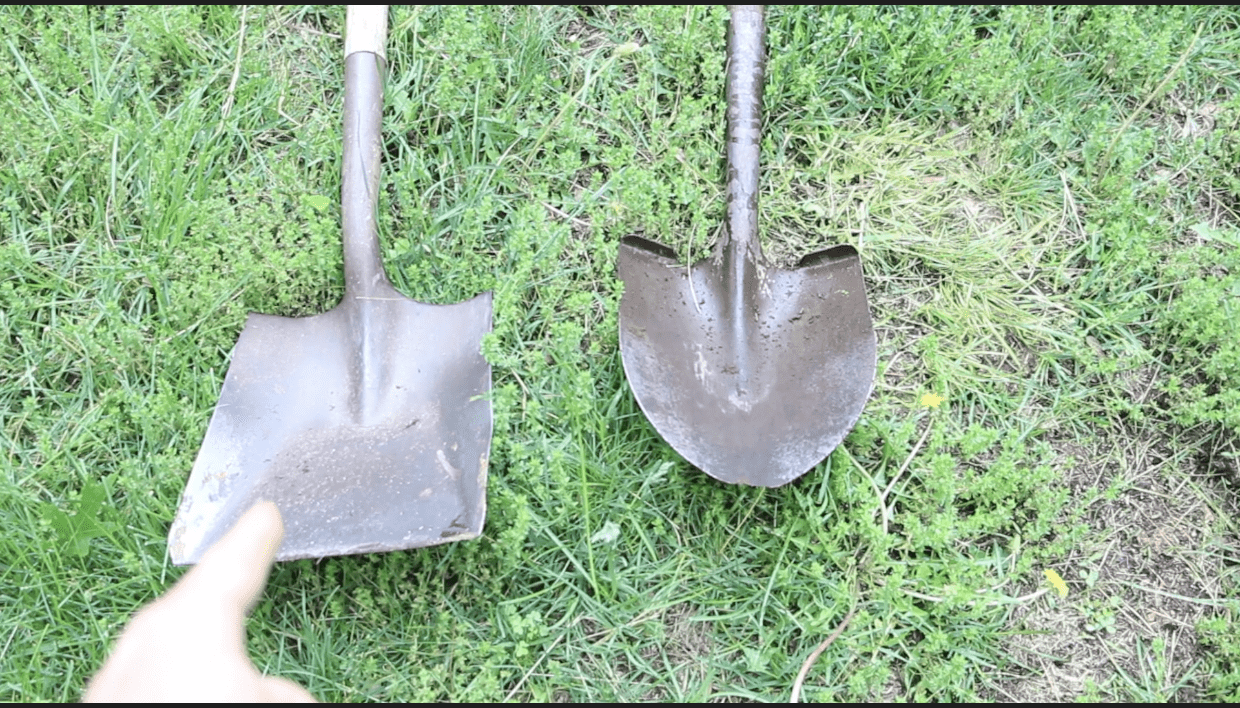
You’ll notice a shovel creates a circular hole when putting the root ball in this hole.The roots will continue to circle around this circular hole.
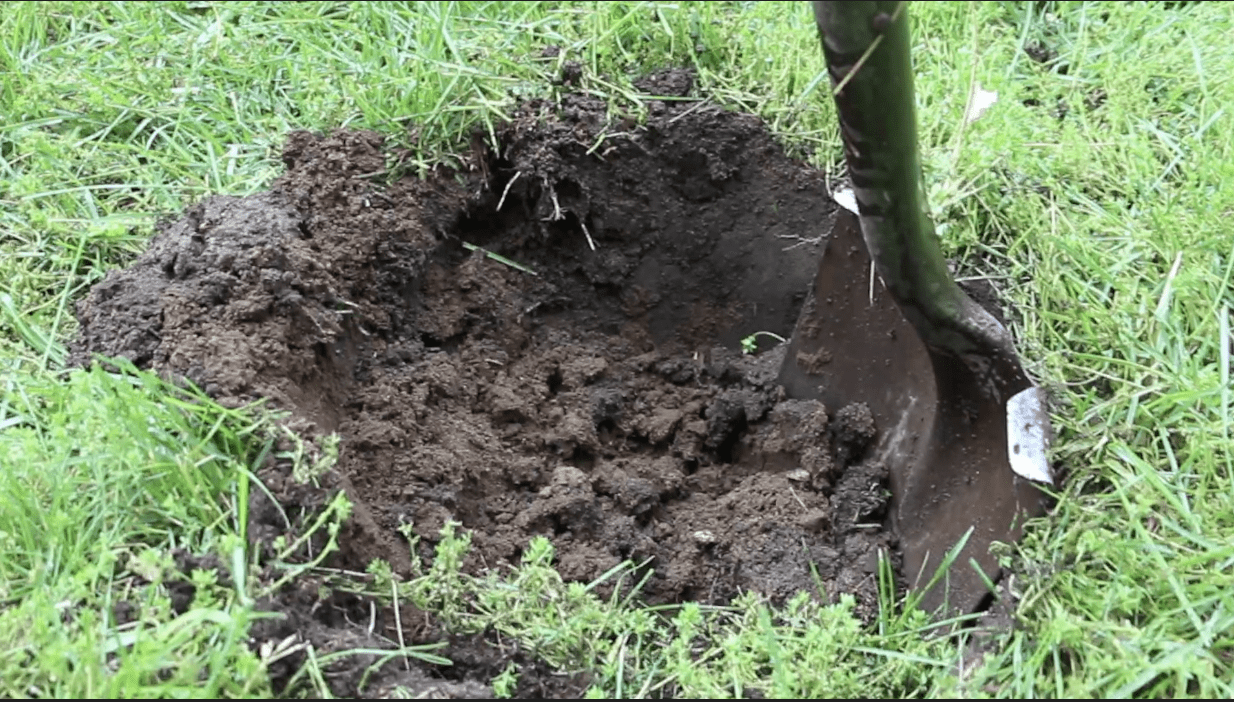
It’s been found that a square hole is much better than a circular hole (Yes, Really! See Here)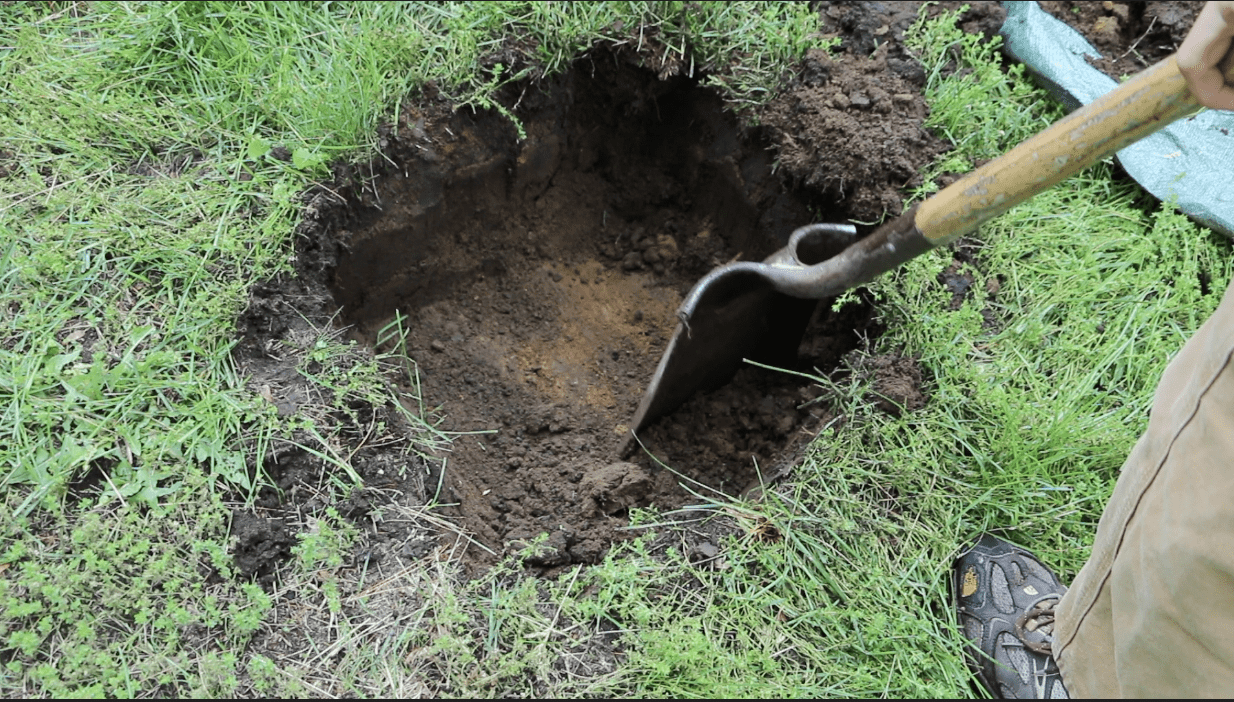
This will allow the roots to penetrate into the walls of the soil.
Once I clean out my square i’m going to score the edges.
I have soft soil but this would be much more important if you have very dense soil.
Transplant
The next step is taking the root ball out of the container now you want to gently massage the edges to loosen up the soil from the container.

Once placing in the hole make sure that the graft union is a couple inches above the soil.
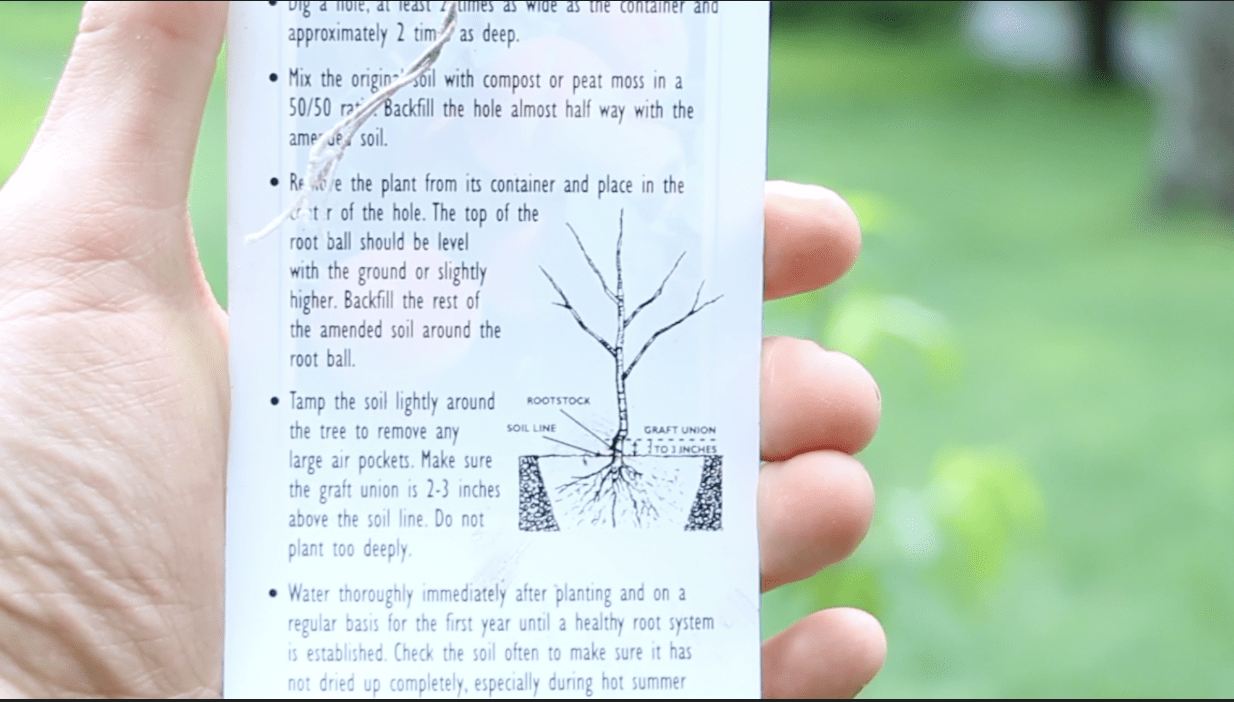
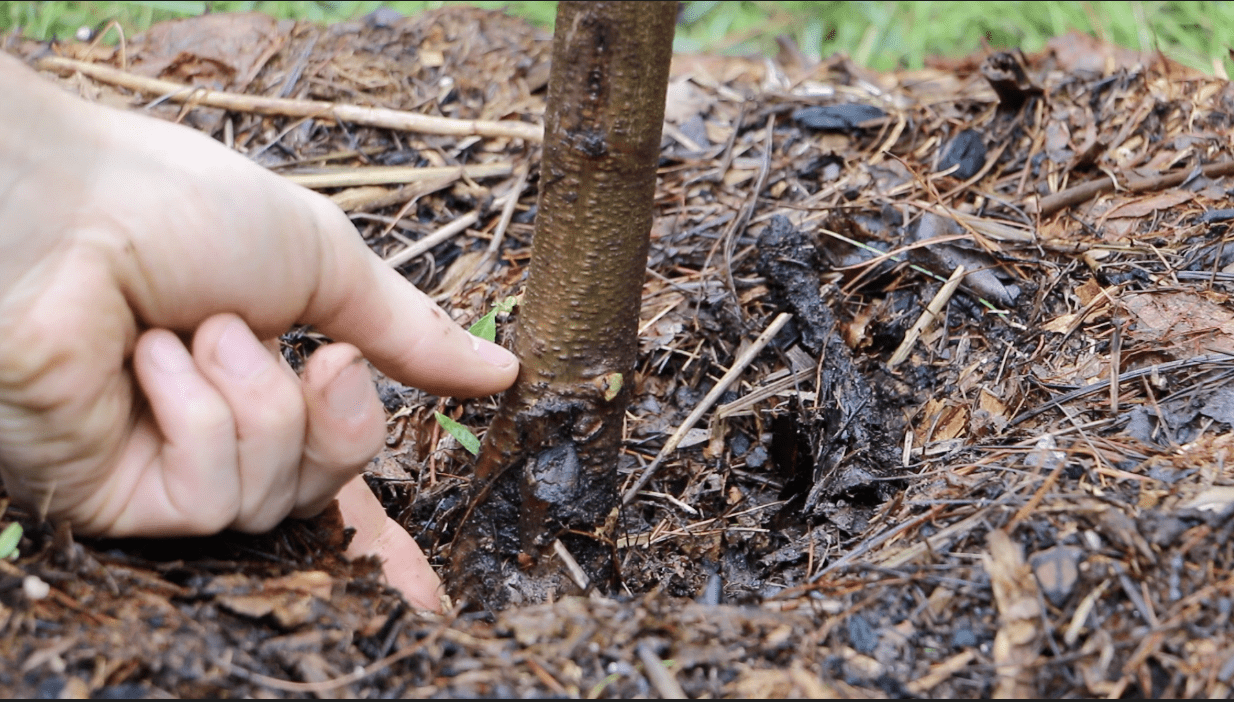
Back fill the hole with the original soil.
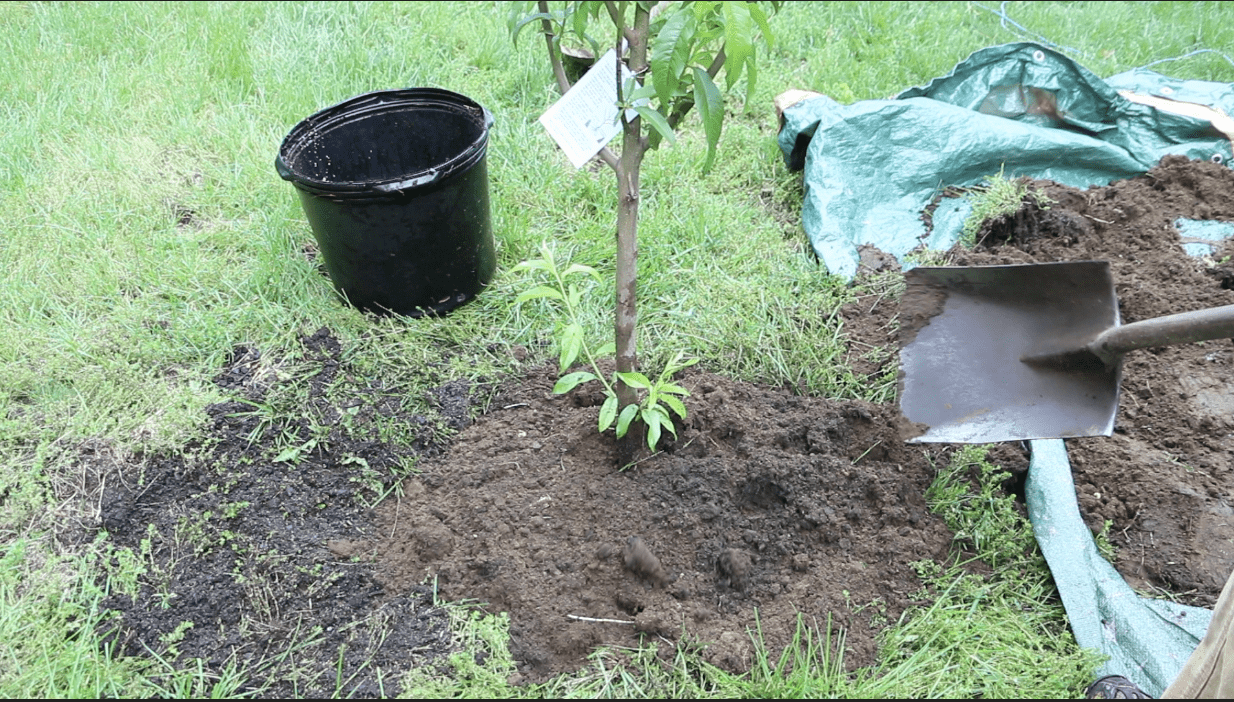
You don’t want to amend the soil with compost or other fertilizers – the reason being is it’s found that annuals do much better with the natural soil.
By not adding fertilizer this allows the roots of the tree to continue searching for nutrients.
If you amend the soil the roots would get very comfortable and the tree wouldn’t extend further.
Remember the first year you really want the tree to be focusing on root production and growing deep roots.
Don’t Stake
Another common mistake is people stake the tree to keep it straight.
You don’t want to do this.
You want to allow the tree to keep itself straight.
Staking will actually prevent the tree from becoming strong.
Mulch
After add some mulch to the base of the tree to keep the soil moist, you can use wood chips but i’m using some unfinished compost.

But, wood chips may have been a better option because it looks like the chickens really like this unfinished compost it made quite the mess!!!
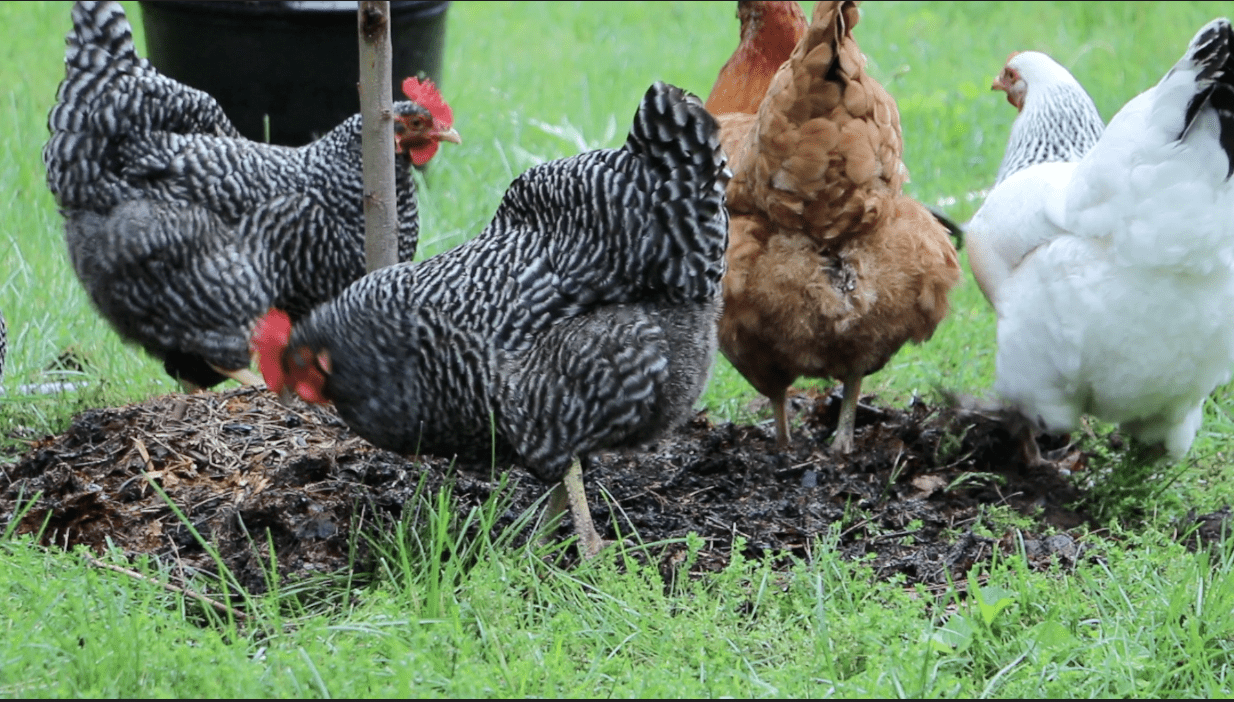
Don’t Forget to Prune
Next you’re going to want to prune the tree.
I’m using these pruning shears.
You want to take about a third of the wood off the tree.
A rule of thumb is you want strong branches that are pointing outwards while cutting down on the foliage to allow the tree to focus on root production.
I like the shape of this tree it has wide angle branches which will be perfect for supporting fruit. however, i’m going to take out about a third of the vegetation.
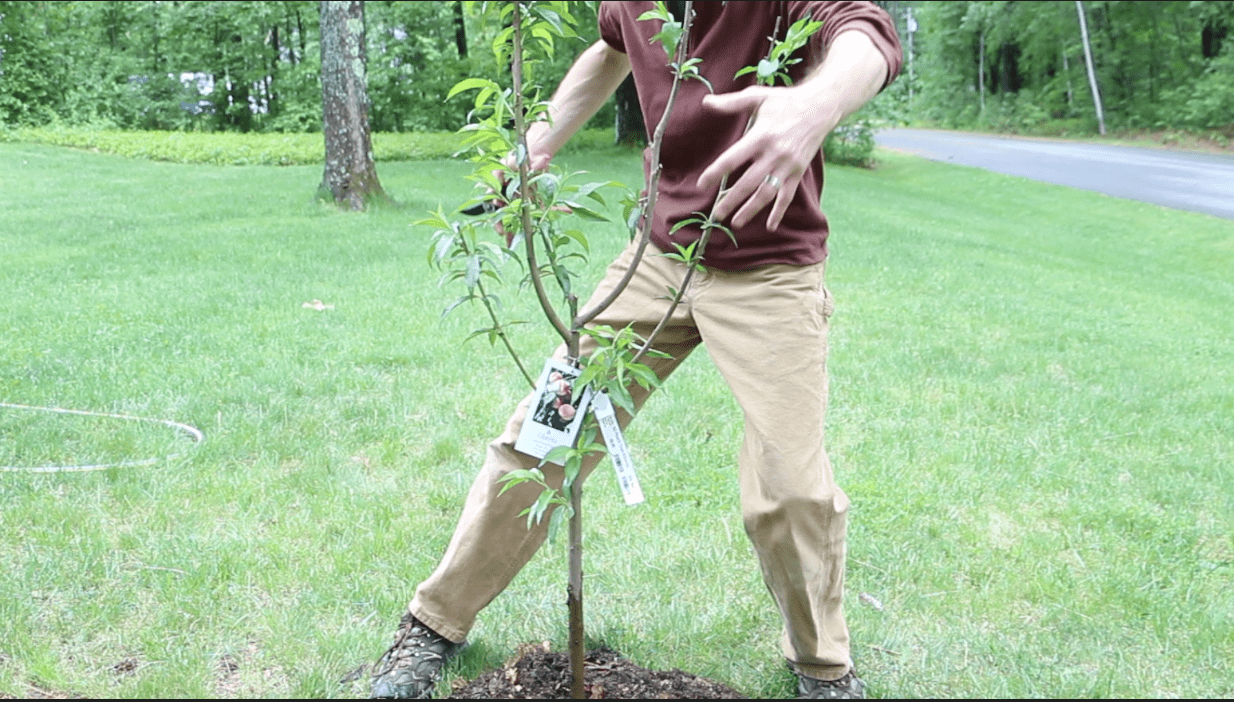
Before Pruning
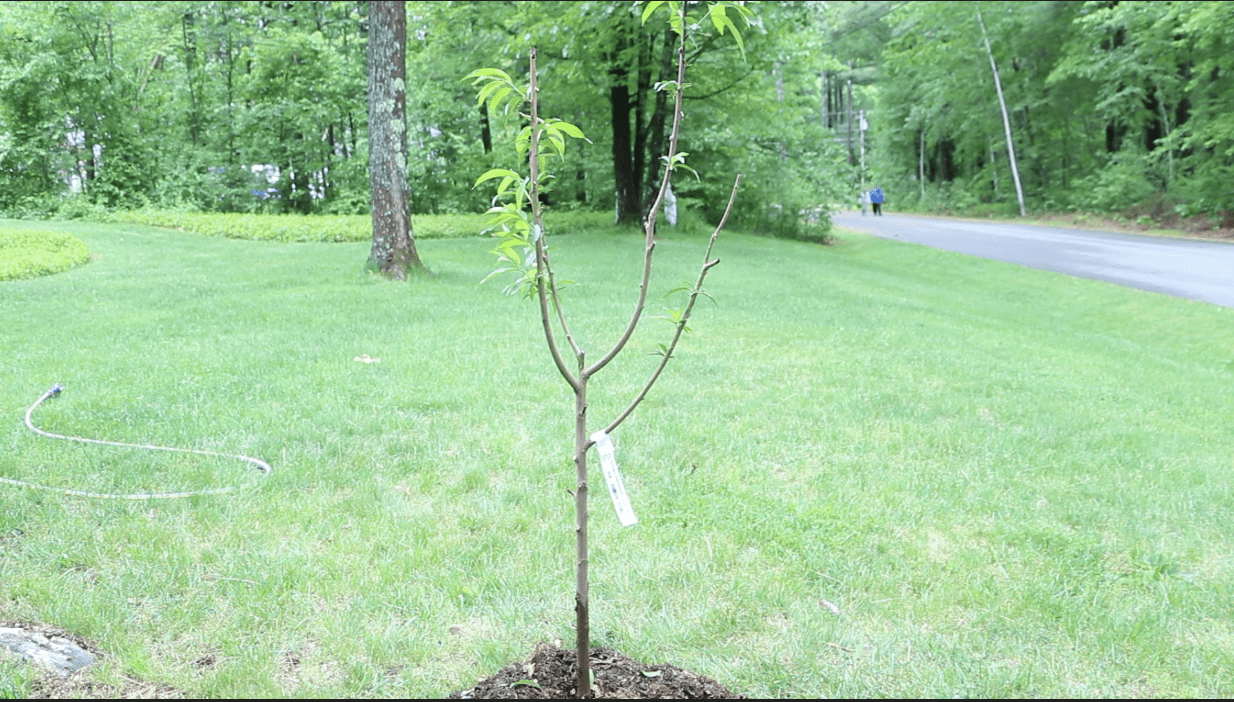
After Pruning
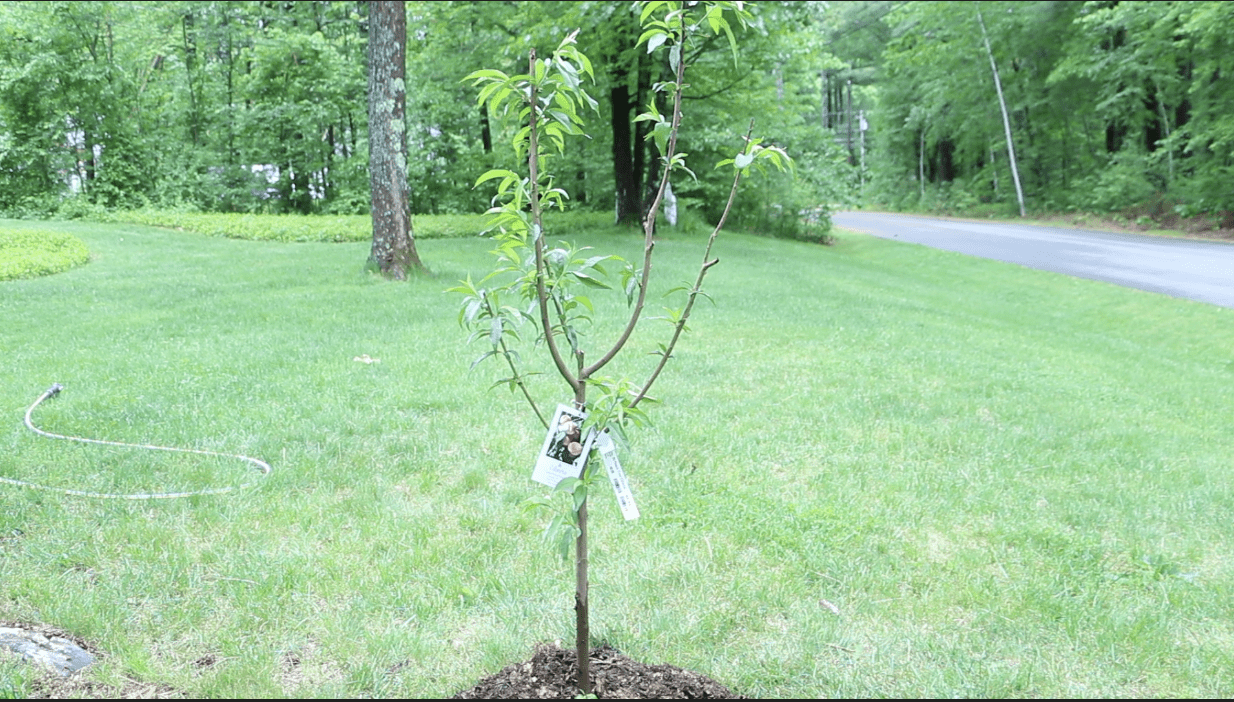
Don’t forget to keep watering
The last and most important part is keeping the tree watered daily for the first two weeks.
Then
3-12 weeks after planting, water every 2 to 3 days.
After 12 weeks, water weekly until roots are established.
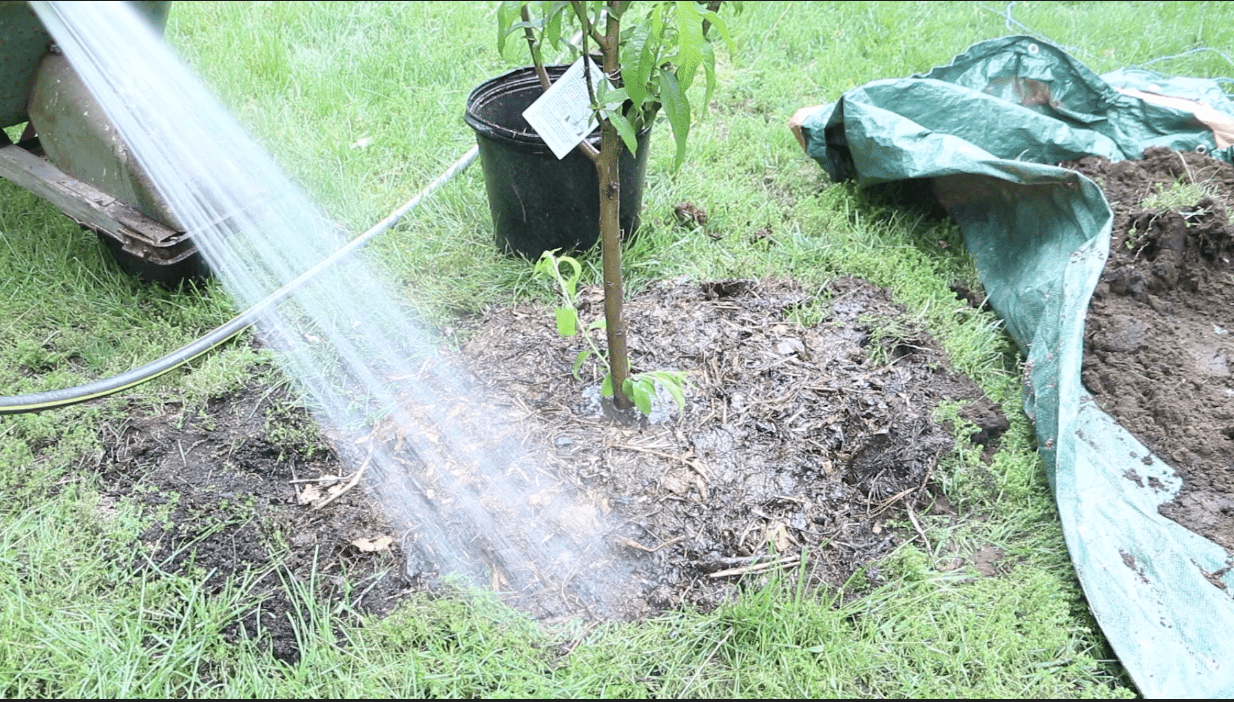
What About Spacing if I’m planting Multiple Trees?
These are some absolute minimum guidelines.
Standard fruit trees need a minimum of 18–25 feet, however for peaches/nectarines about 12–15 feet.
Semi-dwarf leave about 12–15 feet per tree, however sweet cherries can grow up to 18 feet wide.
Dwarf fruit trees need about 8–10 feet each.
Do I need One or Two Fruit Trees?
Below is a square foot garden layout chart of popular plants and their optimal planting spacing. Use this chart as a square foot spacing guide.
Self Fruiting – These trees are capable of setting fruit without the help of another variety to set fruity. However, sometimes cross pollination can increase yields.
Needs Cross Pollination – These need two varieties in order to pollinate each other and set fruit. Look up your local university extension office for more information about blooming time to make sure you are planting varieties that bloom around the same time. Just google “Apple Pollination Chart” for example.
Male/Female – Unlike many trees that are hermaphroditic (their flowers contain both male and female reproductive parts), some species of trees that are ONLY male and ONLY female. The male will not bear any fruit, only female. Therefore you will need males and females.
| Self Fruiting | Needs Cross Pollination | Male Female |
|---|---|---|
| Banana | Apple | Kiwi |
| Blackberry | Blueberry | Papaya |
| Boysenberry | Blackberry | Persimmon |
| Citrus (Most Varieties) | Citrus (Some) | |
| Elderberry | Grapes (Some) | |
| Fig | Olives | |
| Grapes (Some) | Pears | |
| Mulberry | Pecan | |
| Nectarine | Persimmon (Some) | |
| Olive (Some) | Plum | |
| Papaya | ||
| Peach | ||
| Persimmon (Most) | ||
| Pineapple | ||
| Pomegranate |
When do I Start Fertilizing?
Once the root system becomes established several months after planting, you can put a light application around the base of the tree. You may also apply 5-10 pounds of aged manure or compost around the tree.
Going into the second year you can apply in August or early September going into the winter to help with buds the following year.


